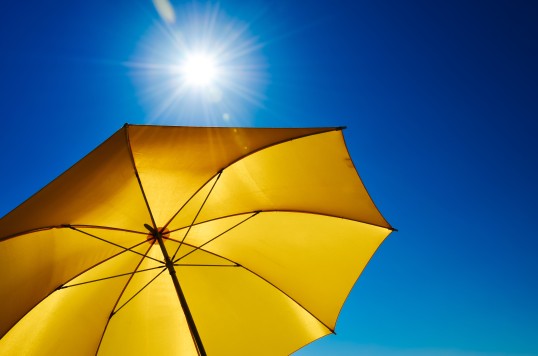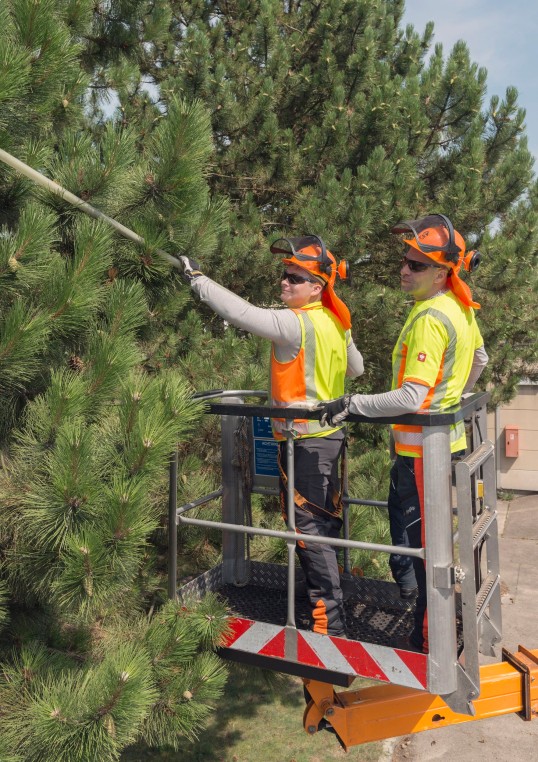- Artificial Intelligence (AI)
- Occupational exposure limit values
- Climate Change and Occupational Safety
- List of CMR substances
- Electromagnetic fields
- Ergonomics
- Industrial Security
- Collaborative robots
- Noise
- Nanoparticles at the workplace
- Optical Radiation
- REACH
- Reference materials
- Proficiency testing
- Vibration
- Virtual reality
- Work 4.0
Protective measures against natural optical radiation

Source: grafxart - stock.adobe.com
Solar radiation has positive properties for the human body. Excessive exposure, however, may have serious and long-term consequences: in the worst-case scenario, exposure over the course of a lifetime may lead to skin cancer.
This risk can be reduced effectively by simple protective measures. However, it must be emphasised that the protective measures listed here provide protection against ultraviolet (UV) radiation not only during occupational activities; in order to reduce the risk of skin cancer significantly, these measures can - and should - also be taken during leisure time activities.
If a risk assessment reveals that persons working outdoors face an increased risk due to intensive UV exposure, protective measures must be taken in accordance with the TOP principle. This means that technical measures always take precedence over organisational and personal measures. If necessary, however, a combination of different measures may be used. Since work involving high UV exposure is often accompanied by high outdoor temperatures, consideration must be given at the same time to protection against heat.
As a first indication of whether outdoor work involves intense exposure to solar UV radiation, Occupational health rule AMR 13.3 provides a definition of “intense exposure to solar UV radiation.”
One area of activity of the IFA's Section Optical Radiation is examining and assessing the suitability of measures for protection against exposure to optical radiation. The analysed information is published online to give guidance and raise awareness for the selection of different types of suitable protection.
IFA Project 4208 examined the UV radiation transmission of vehicle windows. The results of this study can be found in the information sheet: Focus on IFA's work No 0387.

Measuring the transmission properties of truck windows
Source: IFA
Further projects examined the transmission properties of UV protective clothing and the suitability of wearable devices as UV warning systems with focus on occupational settings (see Wearable UV sensors for use during work performed outdoors, in: Focus on IFA’s work, No 0442). A test specification is currently being implemented for sunscreen products, which are to be tested and assessed for their suitability for usage in an occupational context.
Information on Heat and Climate Change

Competence Centre for Climate Change and Occupational Safety and Health (KKA) at the IFA
Recommendations for a safe, healthy climate at work
Info page of the BAuA on Workplace Climate

